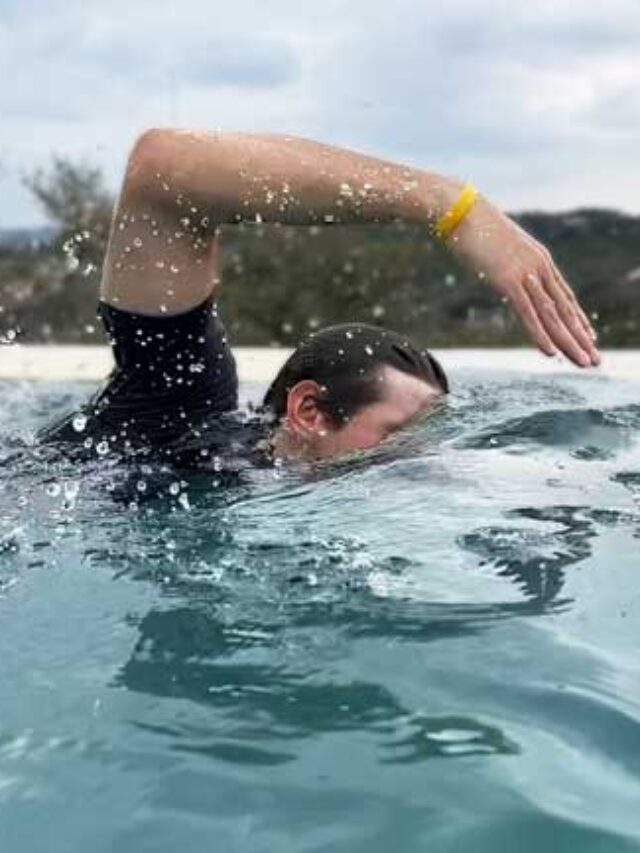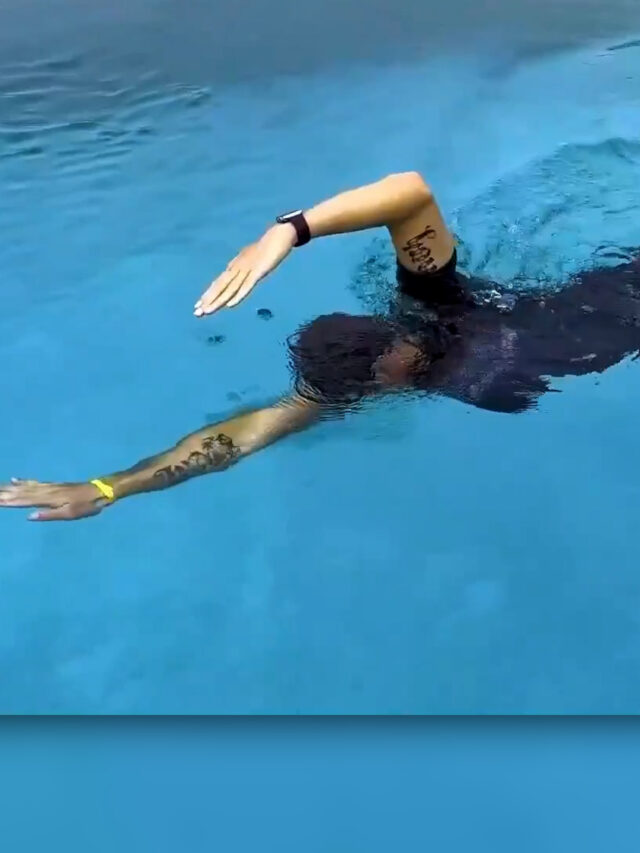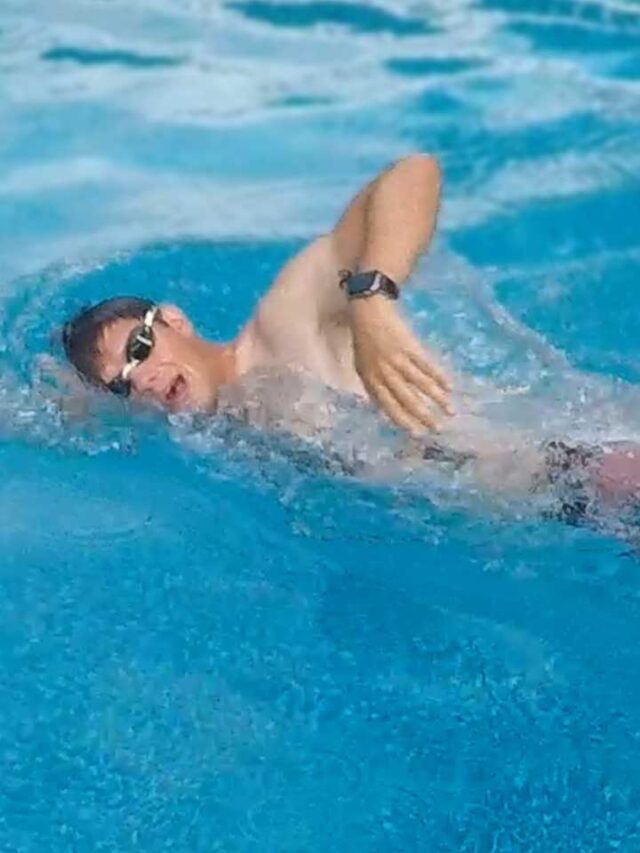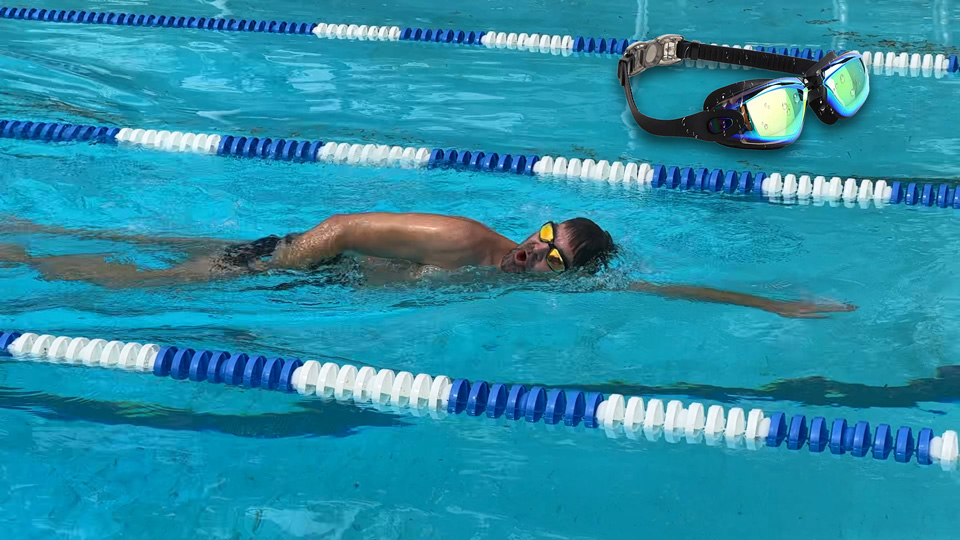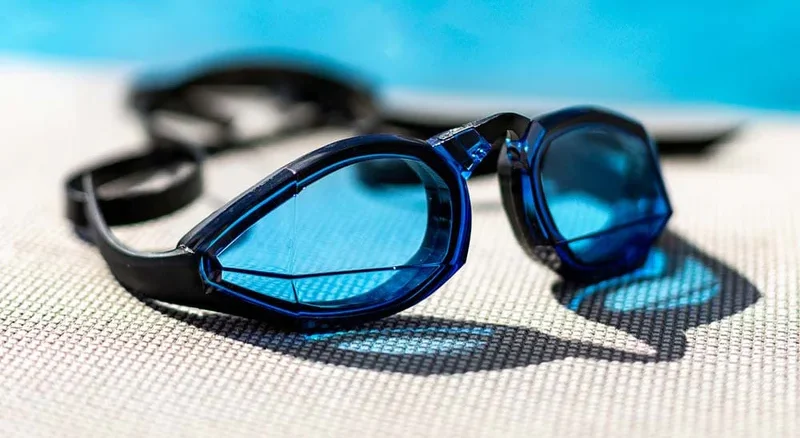Diving into a swimming pool can be a thrilling experience, but it’s important to learn the proper technique to ensure safety and effectiveness. In this guide, you will learn how to dive in a pool safely and efficiently.
Introduction
Diving into a pool is fun and exciting. But diving is more than just jumping into the water. It’s essential to know how to do it right. This article is based on the following video from our YouTube channel Rocket Swimming
Safety First
Diving is not just about making a perfect entry into the water; it’s also about safety. Before we step into the techniques, let’s emphasize the importance of practicing diving in a safe environment and under the supervision of a trained professional.
Safety should always be the top priority when it comes to diving. It is crucial to ensure that the pool you are diving into meets the necessary safety standards and has a suitable depth for diving. The recommended minimum depth for diving is typically around 9 feet (2.7 meters). This depth allows for a safe entry into the water without the risk of hitting the bottom or any submerged objects.
It is essential to practice diving under the supervision of a trained professional, espe. They can provide guidance on proper techniques, correct any mistakes, and ensure that you are progressing safely.
Why Learn How to Dive?
Diving can enhance your swimming experience, allowing you to enter the water smoothly and with style. Moreover, mastering the diving technique can be beneficial for competitive swimmers, as it provides a strong start to any race. Plus, learning to dive means you’re gaining a new skill, boosting your confidence in the water. Whether for fun, sport, or personal growth, diving has something to offer everyone.
Step-By-Step Technique to Dive into Water
To dive safely and look good doing it, you need to know the right steps. Here’s a simple step-by-step guide to help you dive into the water the right way.
Getting Ready
Before you dive, it’s crucial to ensure your safety:
- Check the Depth: Always ensure the pool is deep enough for diving. Diving into shallow water can lead to injuries. Ideally, the diving area should be at least 9 feet deep.
- Clear the Area: Look for any obstacles or people in the pool near the diving area. It’s essential to have a clear pool before you dive.
Standing Position
Your position before the dive determines how well you’ll enter the water. Every great dive begins with a right standing position.
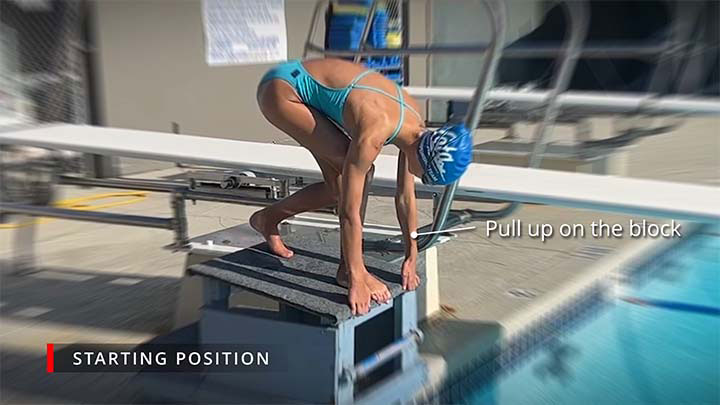
- Position Your Feet: Your toes should grip the edge of the pool, providing you with the necessary balance and leverage. This grip will help you control the direction and angle of your dive. Both feet should be hip-width apart.
- Body Position: Lean forward and try to be as tall as possible. Your chin should be tucked.
- Arm Placement: Extend your arms straight in front of you in a streamlined position, aiming for where you want to dive or pull up on the block. They act as the arrow, pointing your body in the right direction.
The Jump
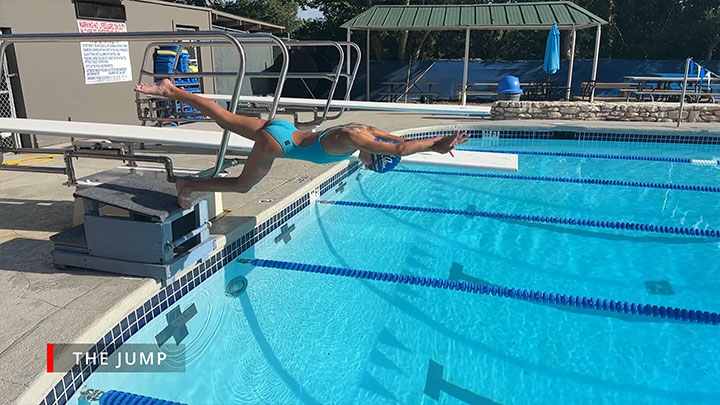
It’s not about height but control. The jump is the bridge between the starting position and your entry into the water.
- Bend and Push: Slightly bend your knees, then push off with your feet. A slight bend in the knees gives you the spring you need. Pushing off with your feet propels you forward, giving you the initial boost.
- Lead with Your Arms: Your arms go into the water first, making it easier for the rest of your body to follow. It’s like your arms are opening a path for your body to dive in.
- Body Position: Keep your chin tucked and core engaged at all times.
The Entry
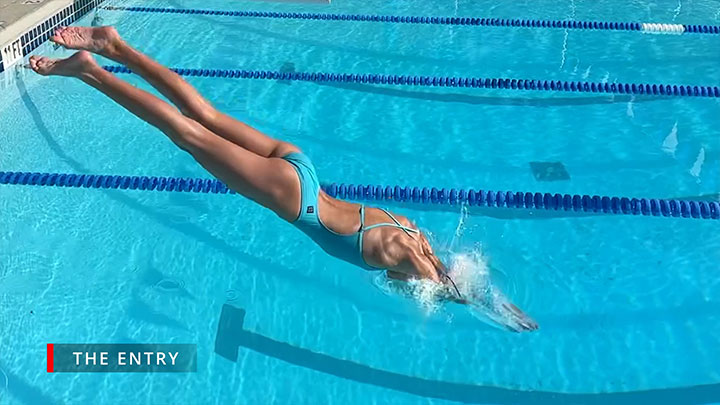
When you dive, your arms go into the water first. This helps make a path for the rest of your body to follow. It’s like your arms are the leaders, showing the way for your body to enter the water smoothly.
- Leading with Arms: When you start your dive, make sure your arms enter the water before anything else.
- Creating a Path: Your arms will make a path in the water. This makes it easy for the rest of your body to follow them in. Almost like opening a door for someone to walk through.
- Smooth Transition: After your arms, let the rest of your body go into the water. Your arms will help make sure it’s a smooth dive.
Glide and Swim
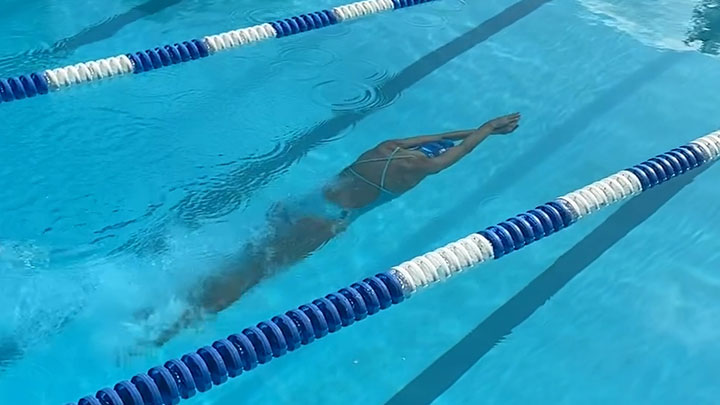
Transitioning from the dive to swimming is crucial:
- Start Swimming: As your momentum slows, initiate your preferred swimming stroke. This transition should be smooth, ensuring you maintain speed. Most swimmers prefer transitioning to freestyle stroke after a successful glide.
- Head to the Surface: As you swim forward, gradually make your way to the surface. Always be aware of your surroundings, ensuring you don’t collide with other swimmers or obstacles.
Diving is a beautiful blend of technique and grace. By following these simple instructions, you’ll find yourself diving with ease and confidence. Remember, practice makes perfect. So, take your time, be patient with yourself, and soon you’ll be diving like a pro. Happy swimming!
FAQs
Q: How deep should the pool be for diving?
A: Ideally, the diving area should be at least 9 feet deep to ensure safety.
Q: Can I practice diving in any pool?
A: No, always ensure the pool is designated for diving and is free from obstacles.
Q: How often should I practice diving to get better?
A: Practice as often as you feel comfortable. The more you practice, the better you’ll get. However, always ensure you’re in a safe environment.
Q: What if I’m afraid of diving?
A: It’s normal to have fears. Start by practicing in shallow waters with a coach or experienced swimmer. As you gain confidence, you can move to deeper waters.
Q: Are there any exercises to improve my diving technique?
A: Yes, strengthening your leg muscles with exercises like squats can give you a better push-off. Practicing your arm reach and streamline position out of the water can also help.
Remember, always prioritize safety and seek guidance if you’re unsure about any aspect of diving.


